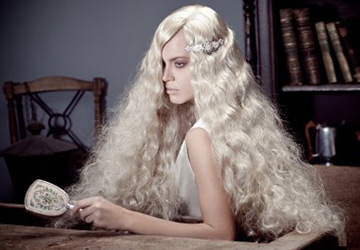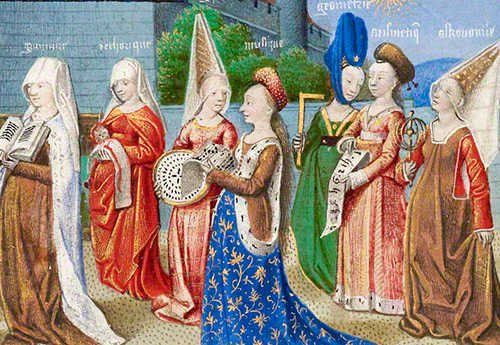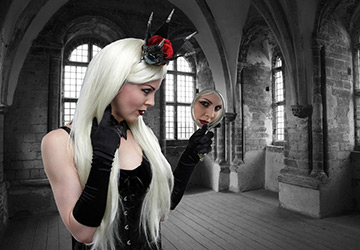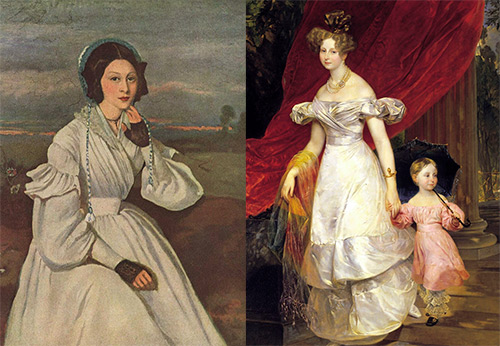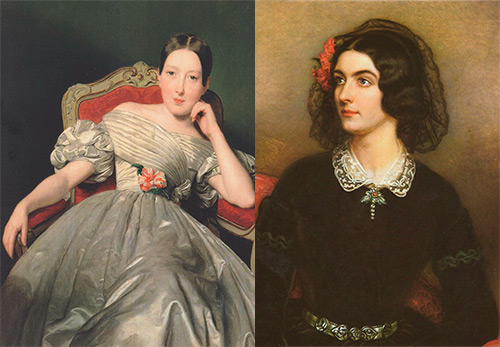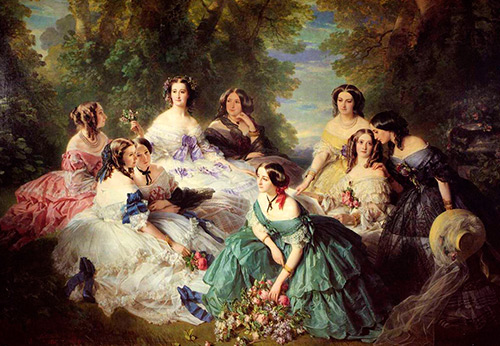Fashion history
Medieval fashion and costume - Romanesque style
The period of the Middle Ages in the history of Europe is quite extended in time (V-XV centuries). But the Middle Ages were not homogeneous both in the field of art and in the field of everyday life.
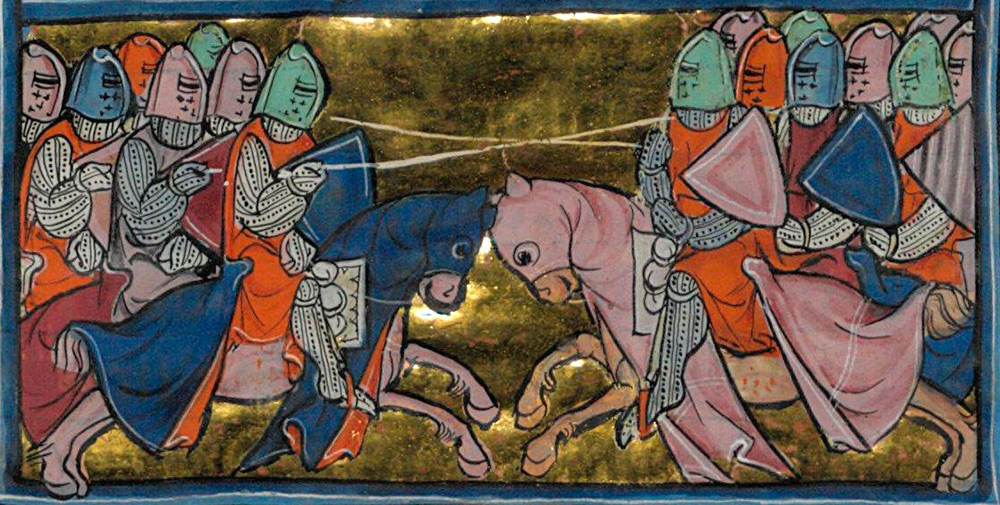
Thumbnail from the book "Histoire du Graal"
So, the period from the 5th to the 11th century is considered the early Middle Ages. This is the time of the birth of European culture and the formation of the first states. XI-XIII centuries - Romanesque period both in European art and in costume. XIII - XV centuries - gothic time or the late Middle Ages.
This article will focus on the European Romanesque costume - the clothes of the Europeans of the XI-XIII centuries. Time in the history of Europe is turbulent. This is the time of wars, crusades and knightly tournaments. The time of knights and beautiful ladies. And also - this is the period of the fires of the Inquisition and plague epidemics.
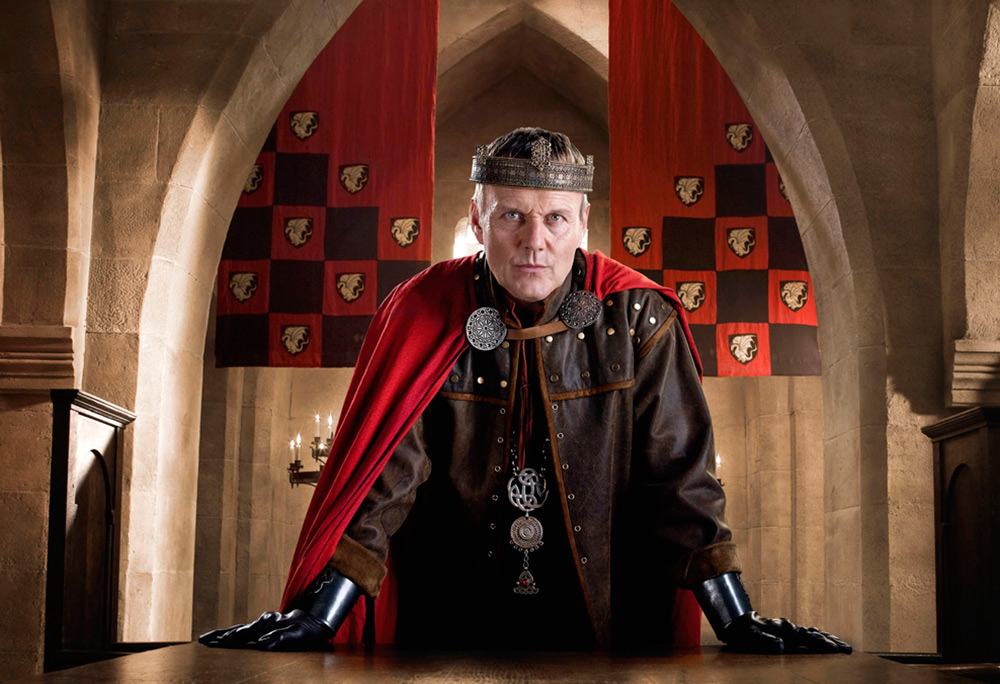
Uther Pendragon
Shot from the TV series "Merlin"
Romanesque style of dress
Women's and men's Romanesque costume is still in many ways similar to the costume of the Roman Empire - it is based on a tunic. Just as in more ancient times, there is no clear separation of men's and women's clothing - the basis of both men's and women's Romanesque costume is a tunic dress.
The concept of fashion has not yet appeared. Fashion appeared later, during the Gothic period, at the Burgundian court. However, clothes are already gradually beginning to be cut, and not sewn from a single piece of fabric.
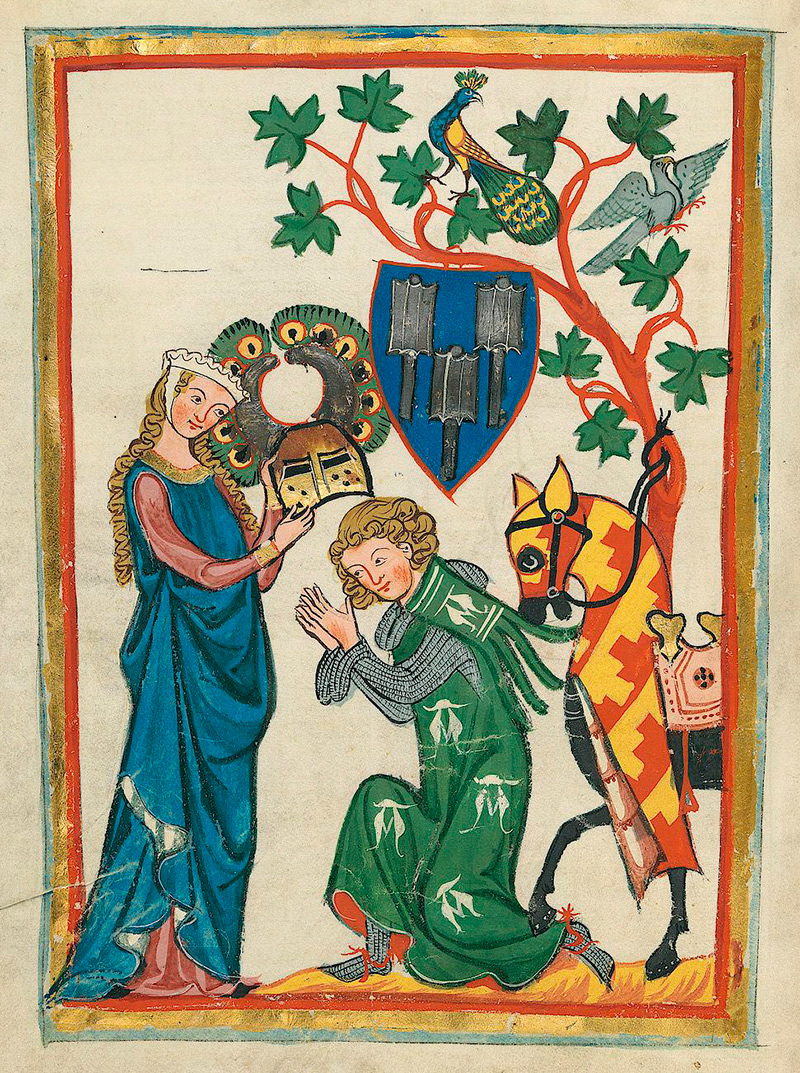
The knight and his lady of the heart
Book miniature
So, in the 11th century, a cut with three seams (the middle seam of the back and side seams) appears, thanks to which the upper part of the bodice of both women's and men's clothing fits exactly to the figure. In this case, the lower part of the garment is often expanded using triangular wedges.
Men during the Romanesque period wore an undershirt, over which a cott or blio was worn.
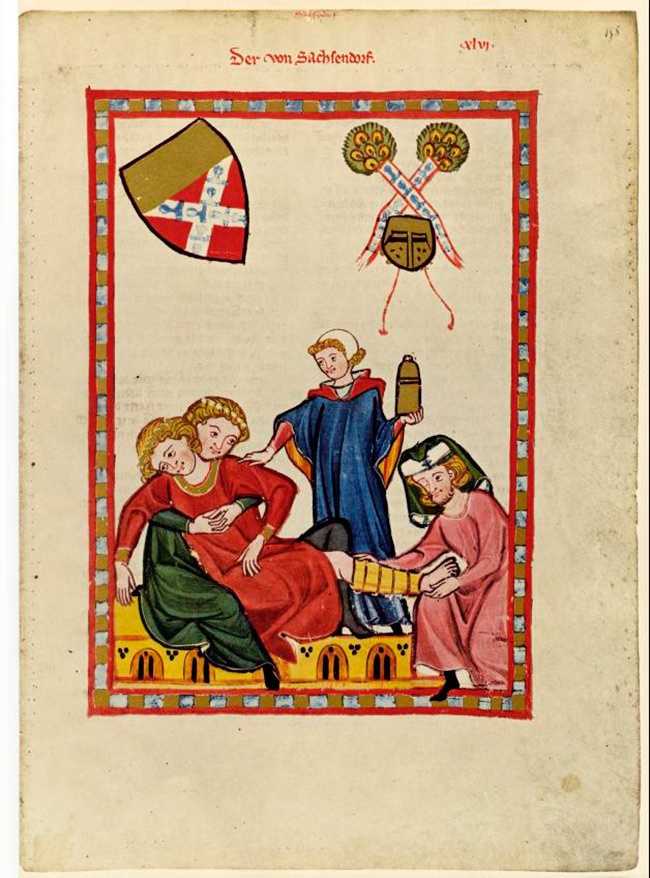
Splint on a broken leg
Miniature of the Manes Codex
Kott is an outer tunic dress. The length of the cott dress varied over time. In the 12th century, a cotta was worn with a length just above the knees; by the 13th century, the length of a cott dress began to reach the ankle. The cott was always worn with a belt around the hips. The collar of the cott dress and its belt were decorated with ornaments in the same style.
Blio is an overhead outer garment (that is, worn over the head) made of silk or woolen fabric with a low cut-off waist line. The men's blio of the Romanesque style had two options - a loose one with a wide skirt and a belt, or with a narrow waist and a wide skirt without a belt.
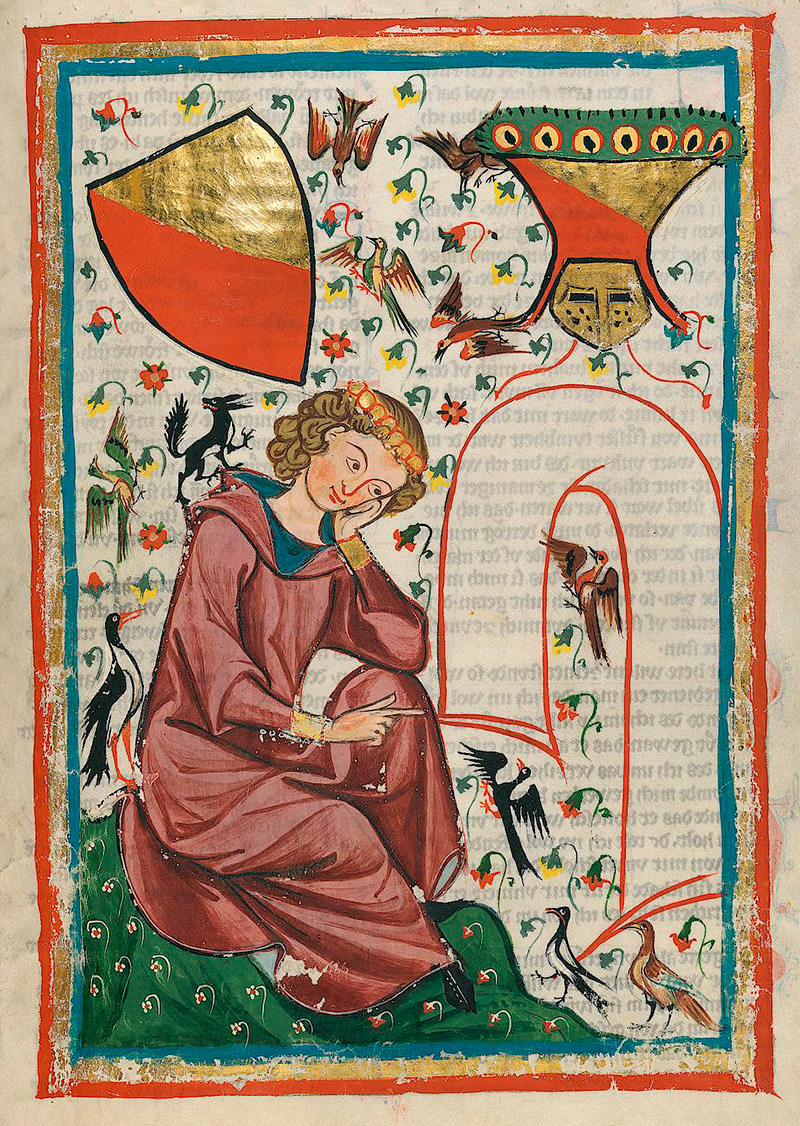
Heinrich von Feldecke
Miniature from the Greater Heidelburg Manuscript
Over the dress, the cott could wear surcoat - clothes like a raincoat. A surcoat in a man's suit is an outer garment in the form of a tunic, with a round neck, both with and without sleeves. Sleeves are missing in later surcoat designs. The length of the surcoat reached the knee.
In addition to surcoats, men wore various raincoats, most often of a round shape. The highest nobility and kings could wear robes - a large-sized cloak made of expensive fabric with decorations, trimmed with marten, sable or ermine fur.
On their feet, the men wore stocking pants called chasses. They were narrow and tight-fitting legs. Colors - green, red or brown.
Bree trousers were also worn with the chausses - short, most often made of linen.
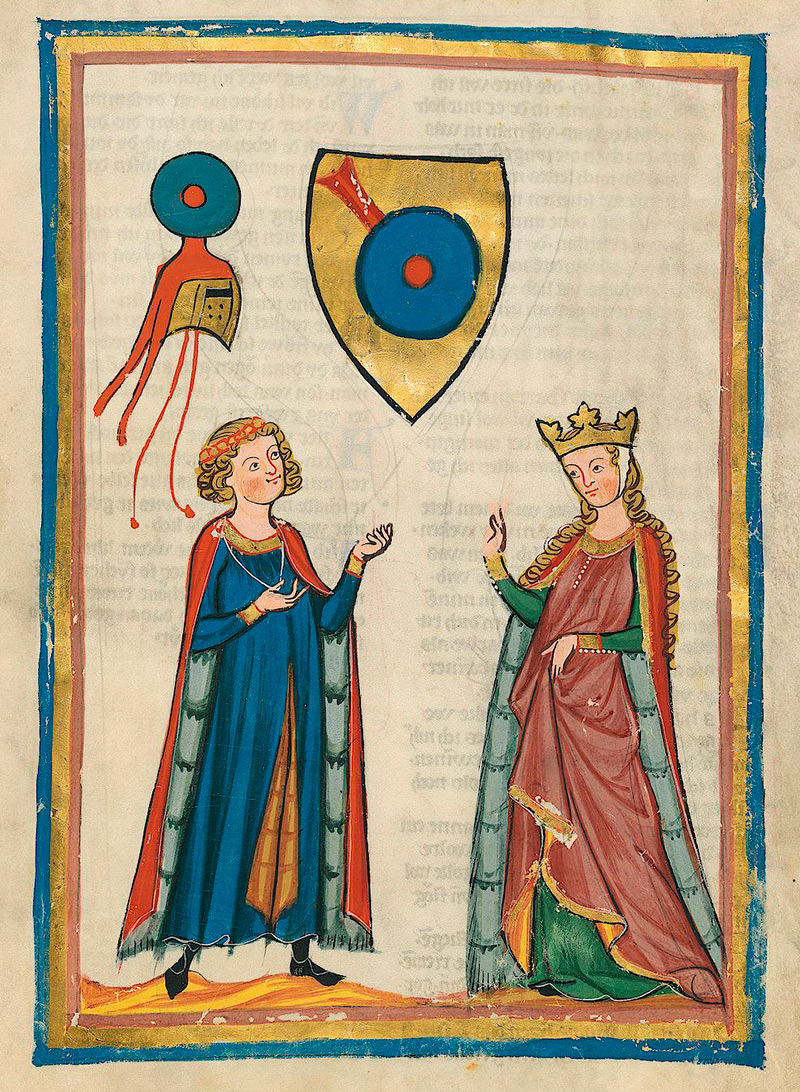
Miniature from the Manes Codex
Men's clothing, however, like women's clothing, of the Romanesque period was in bright colors. Favorite color combinations of the Middle Ages are red / pink and green, red and blue. For example, if the color of the front of the cloak is blue, then its back was most often red.
Appears in the period of the Romanesque style and the miparti fashion, that is, the fashion to wear clothes in the colors of the coat of arms. In medieval Europe, both representatives of aristocratic families and cities had their own coat of arms.Miparty clothing often consisted of two or four colors. For example, the right side of the blio could be red, the left side green, the right side of the highway yellow, and the left blue. Such clothes were most often worn by young people and pages.
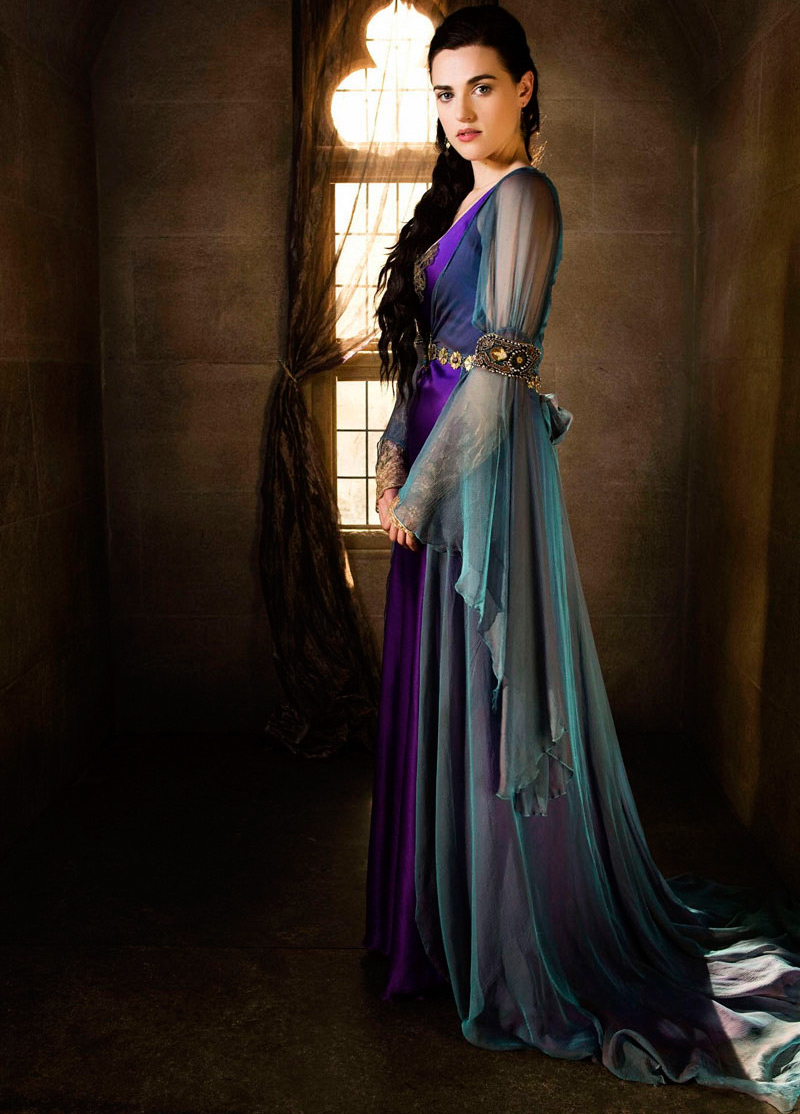
Morgana
Shot from the TV series "Merlin"
Blio-styled dress
Women, like men, also wore two types of outerwear - cotta and blio.
A cott is a sleeveless top dress worn over an undershirt.
Blio in a woman's suit differed from a man's in length. The length of the women's dress was close to the floor. Blio was sewn from expensive fabrics, for example, brocade. Could be embroidered with gold or silver threads. Another feature of the blio dress is wide sleeves.
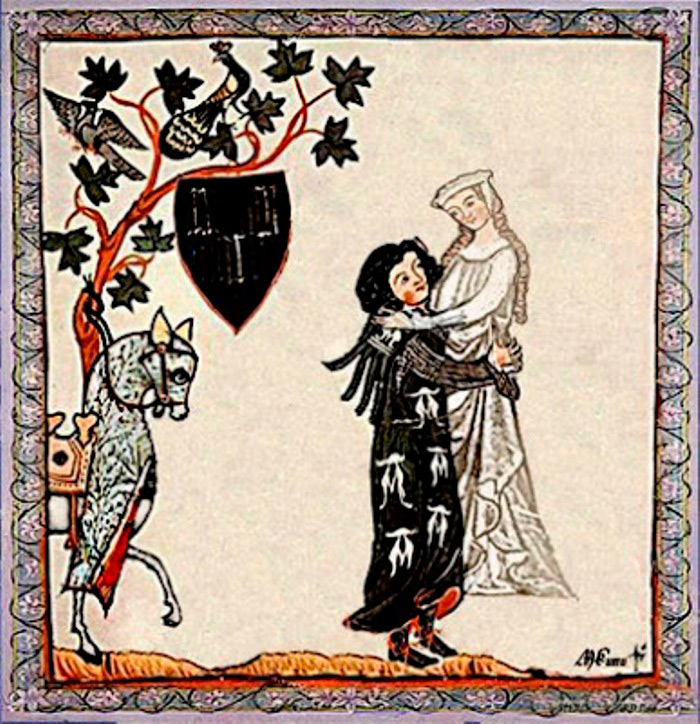
Knight and lady of the heart
Medieval miniature
Women could wear surcoats over the cotta dress. Women's surcoat was distinguished by wide armholes that could be trimmed with fur. This surcoat was considered the most elegant and was called "royal".
Also, women always wore hats. After all, the Christian Church during the Middle Ages ordered women to hide their hair. Also, the church opposed makeup, considering it a deception, and lying, as you know, is one of the deadly sins. However, already in gothic period women will start using blush and lipstick.
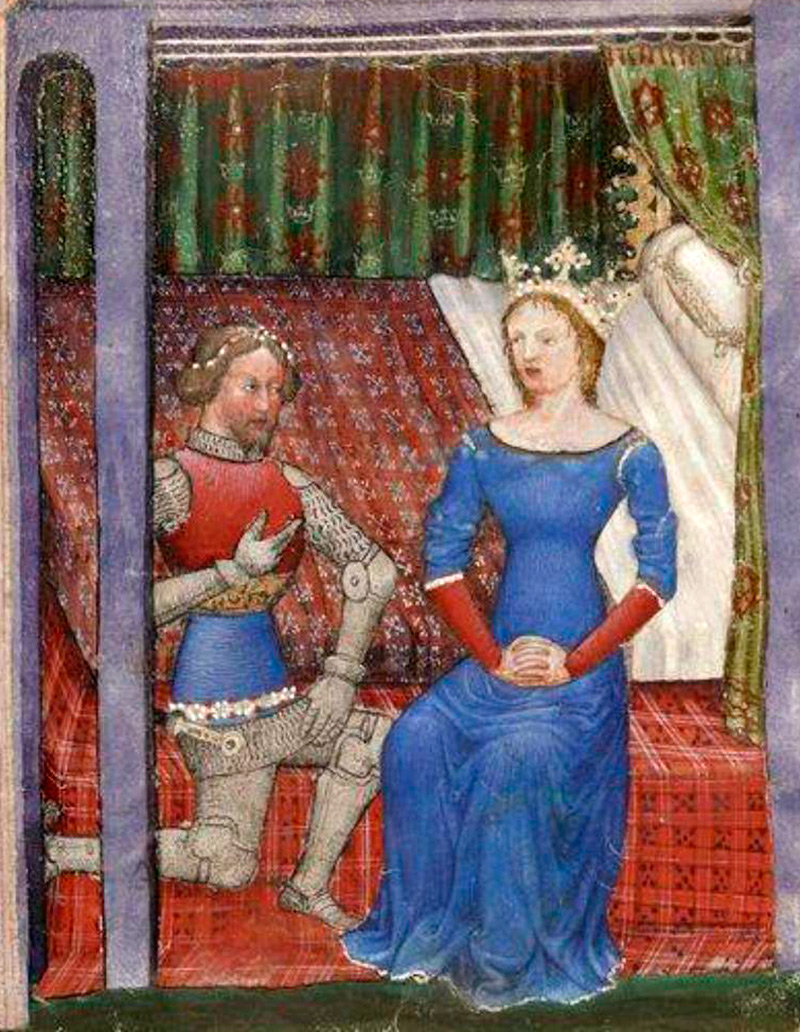
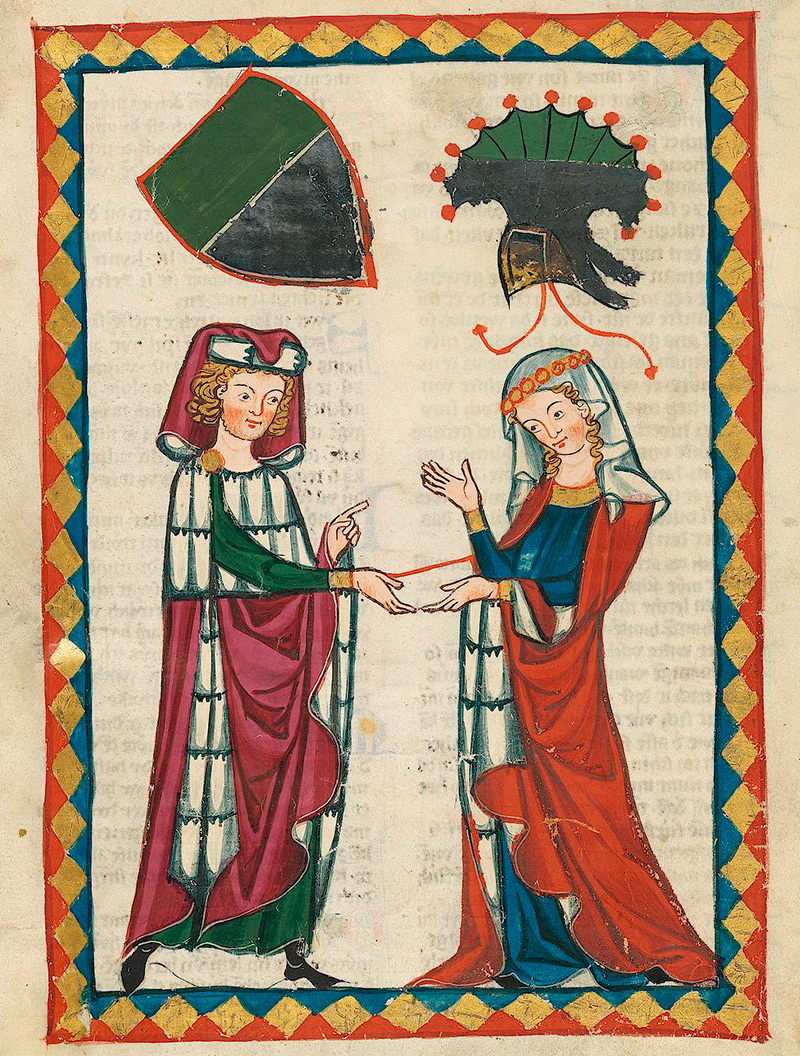
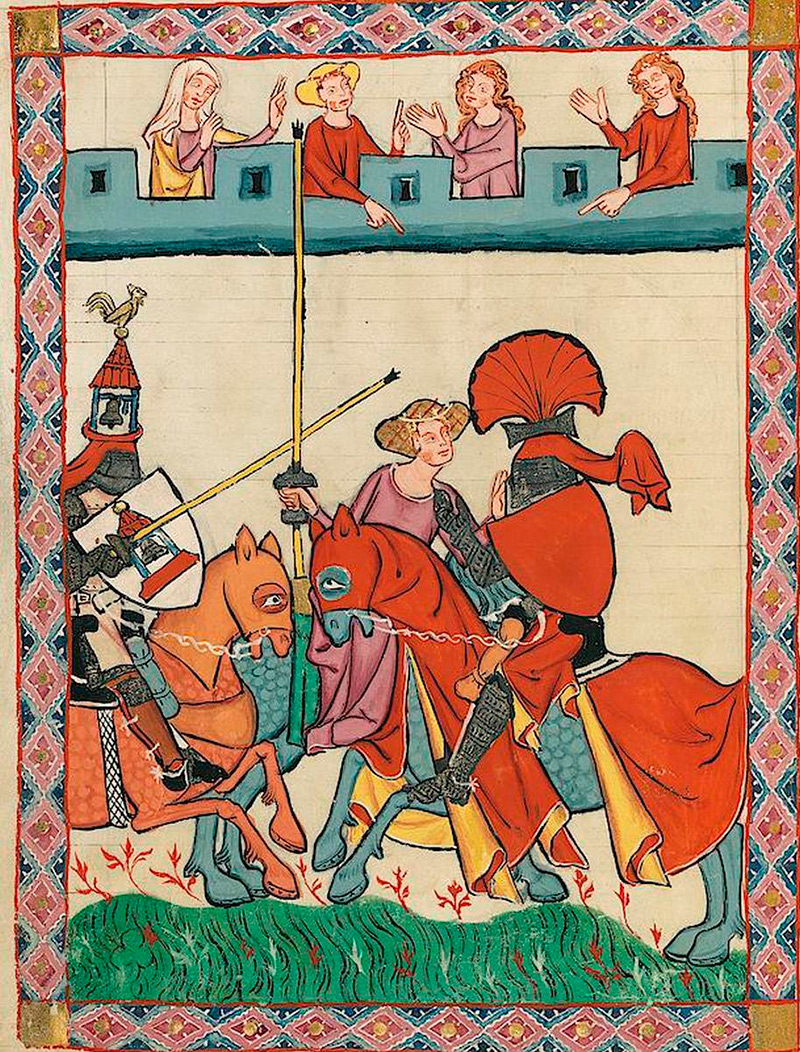
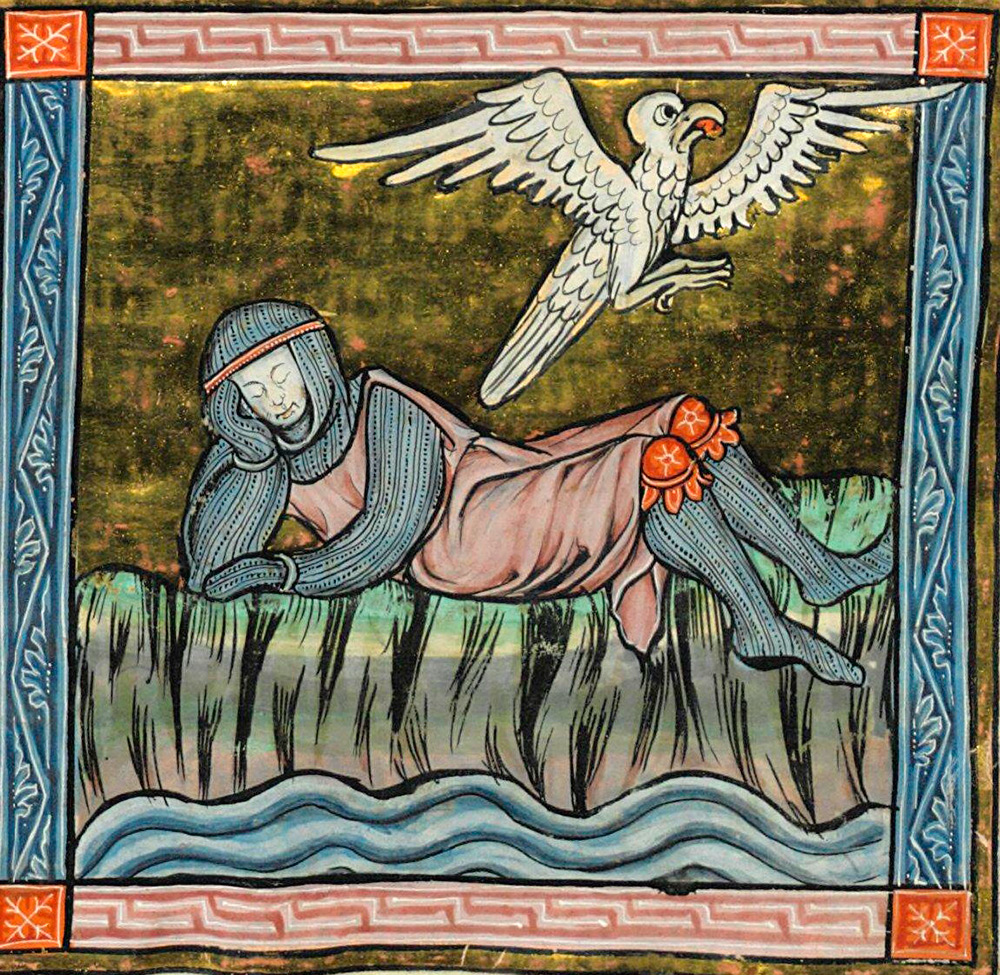
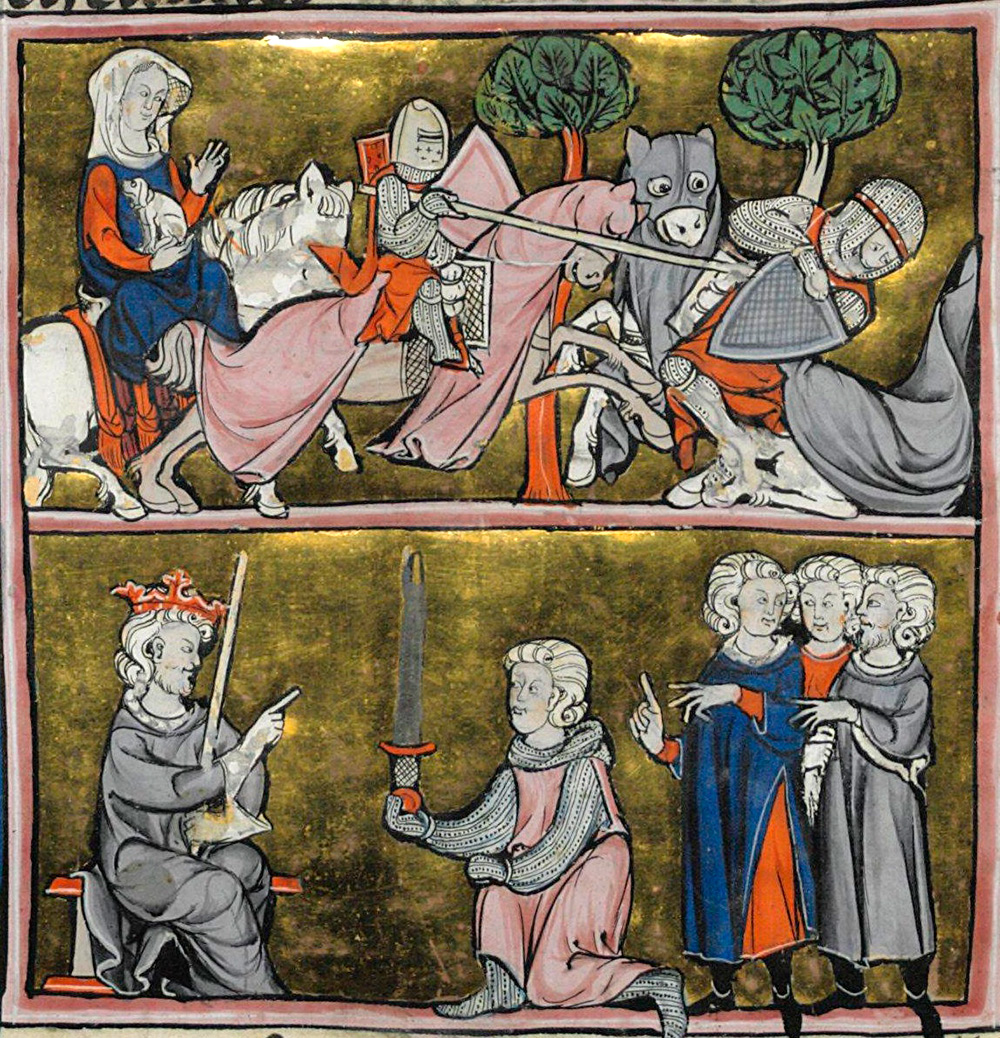
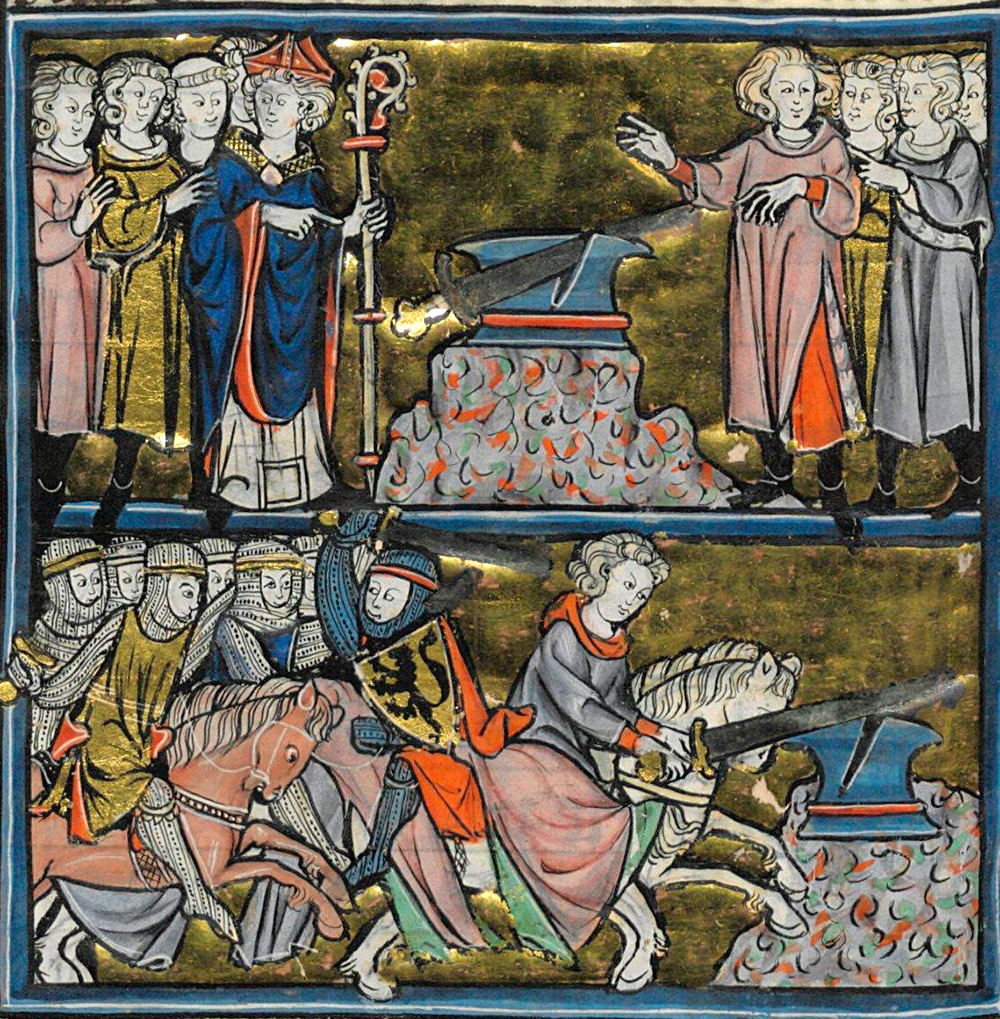
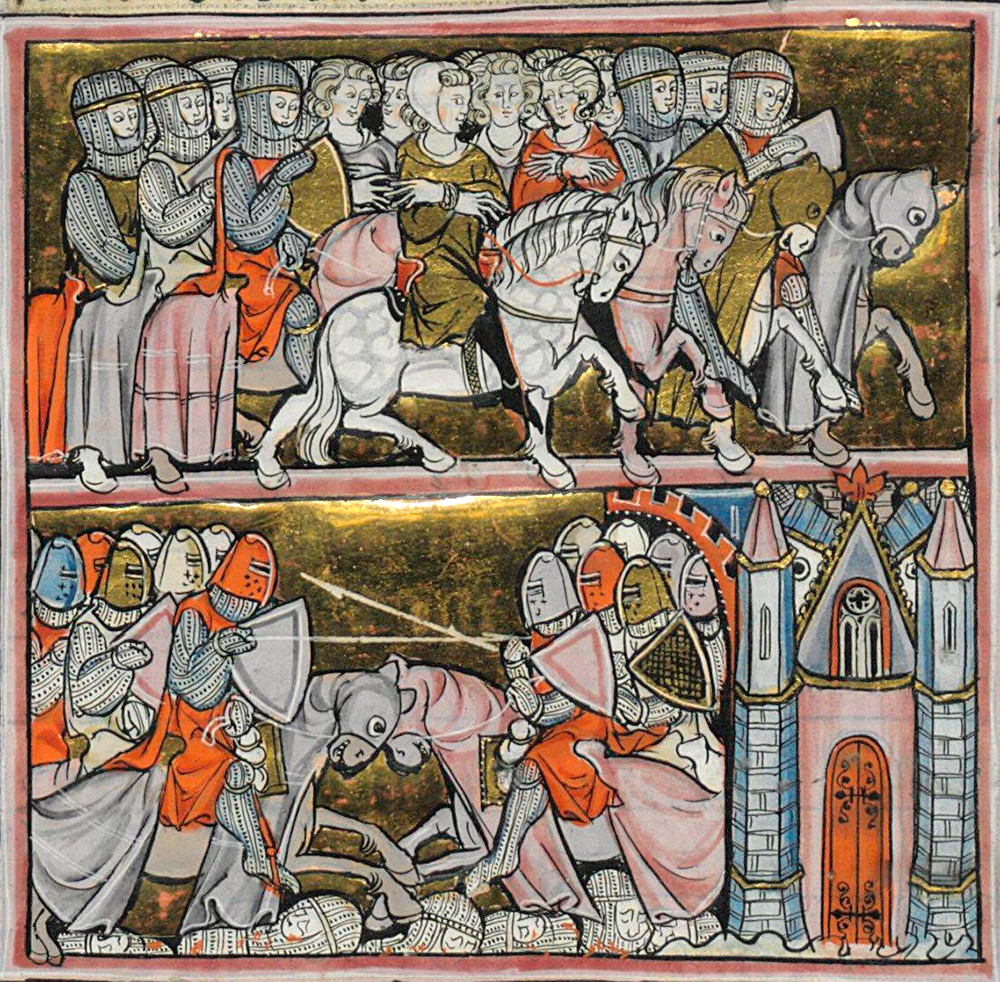
Comments and Reviews
Add a comment
Rating news
Shades of clothing that make women look younger
What shades of hair make women younger: rules and photos
Funny wedding dresses - photos and ideas
12 most expensive down jackets for the winter
How to look 25 at 40: tips from supermodels
Beautiful schoolgirls
Anti-aging haircuts and hairstyles for women
Fashionable skirts for autumn and winter
Fashionable women's trousers for the cold season
Fashionable and stylish sandals for summer 2024
Spring-summer 2024
 Fashionable dresses and tops with thin spaghetti straps
Fashionable dresses and tops with thin spaghetti straps
 Bandana tops: how to wear stylishly and beautifully
Bandana tops: how to wear stylishly and beautifully
 How to put together the perfect men's wardrobe for the summer
How to put together the perfect men's wardrobe for the summer
 Fashionable shorts for spring-summer 2024
Fashionable shorts for spring-summer 2024
 Fashionable skirts for spring-summer 2024: a guide to online shopping
Fashionable skirts for spring-summer 2024: a guide to online shopping
 The most fashionable dresses spring-summer 2024: styles and colors
The most fashionable dresses spring-summer 2024: styles and colors
 Fashionable total look 2024: ideas of images and trends
Fashionable total look 2024: ideas of images and trends
